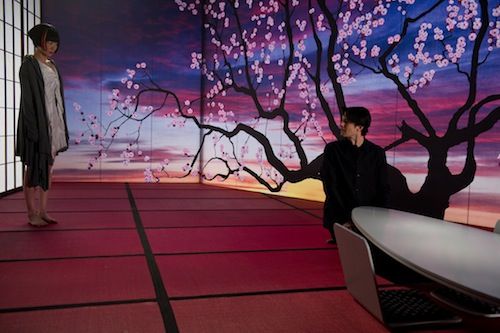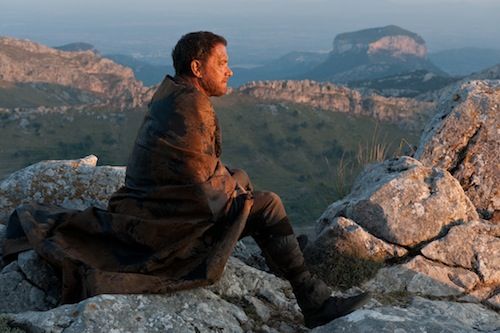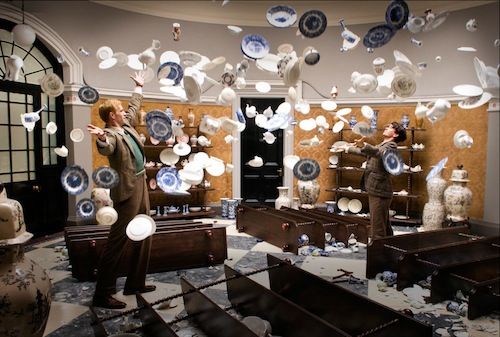Cloud Atlas doesn’t really work. There can be simple reasons why some films find themselves in this situation: the lead actor was miscast, or the script needed a few more drafts, or the budget was too low, or the director didn't have a strong enough vision.
It's easy to observe a film’s errors and be aware of the superior work hiding beneath its skin. Beyond exploring the wrong turns made during Cloud Atlas’ production, however, is a pertinent question: could the film have ever worked? Is it a valiant attempt at translating an unfilmable book to the screen or a botched adaptation of superlative source material – a compelling artistic exercise or a missed opportunity?

Adapted and filmed by the Wachowksi siblings (The Matrix trilogy) and Tom Tykwer (Run Lola Run), and based on the novel by David Mitchell (not that one), Cloud Atlas follows six separate stories set in different eras, loosely connected by the idea that all six protagonists are the same soul. Eschewing the book’s nesting structure where each protagonist found the previous story, the film cuts between them, highlighting the thematic and narrative similarities in each story, while its cast play different roles.
The decision to cut between stories is understandable and often well-handled, but means that every story has to be connected. In trying to draw out the book's underlying theme – the endless cycle of subjugation of one's fellow man – each story is winnowed down so it has vaguely the same plot. The result is that a generally comic story like the contemporary one featuring Jim Broadbent's fastidious publisher seems woefully out of place when sitting alongside stories where human lives and whole societies are at stake.

Unsurprisingly, even with a length of nearly three hours, Cloud Atlas suffers from too little time spent in each world and with each main character. Having six whole narratives to plough through doesn't help, but a greater issue is the time devoted to lengthy voiceovers that underline the film's themes over and over again whilst the characters are shown treading water in their narratives, stuck in repose, thought or danger.
The separate plots grind to a standstill on several occasions to do this, and then have to race to catch up. In the 2144 story, it's barely established how genetically-enhanced fabricant Sonmi-451 is subjugated before she becomes drafted to join the resistance, whilst Halle Berry's 70s journalist solves her case with virtually no effort: new developments literally come to her apartment and knock on her door.
The struggle to define so many different worlds means all of them feel smaller and more generic than they should. Despite its $102 million budget, the film feels reined in. Considering that its directors are so talented at conveying movement and action, it's disappointing how saggy and slow Cloud Atlas feels, while there is also no effort to differentiate the stories visually.

Where much of the pleasure in Mitchell's book came from his experimenting with different genres and writing styles, there is no corresponding shift in the translation to film. As a consequence of the stories being mixed in together, they share their look, theme, plot and actors. The result is oddly reminiscent of the Wachowkis' Matrix Trilogy: good guys destroying an evil Hugo Weaving over and over again, in order to free the oppressed.
The reasoning behind having the actors play multiple roles is fairly clear, suggesting through repetition that anyone is capable of contributing to subjugation, and that man is caught in a near-eternal struggle to break free of it. However, the technique is ubiquitous enough to be incredibly distracting, especially in dramatic scenes or during the film's first half when the six protagonists are being established. There are a few fun cameos, particularly Tom Hanks as a thuggish writer and Hugh Grant’s many ne'er-do-wells, but it's impossible to not play a game of Guess The Actor. For the most part it adds to the film’s unintended goofiness, making Cloud Atlas hard to take seriously even as it argues nuanced, interesting points.
There probably was a better film to be made from the source material, but even that one would have likely been a sprawling mess. The Wachowskis and Tykwer demonstrate real intelligence in the choices they've made and a good understanding of what is special about the novel, while their ambition and willingness to engage with big themes is laudable. For Cloud Atlas to have even been made at all is a major accomplishment; sadly, that doesn’t make the actual film any more satisfying.










 A 1900s Heinz can that was
A 1900s Heinz can that was 










